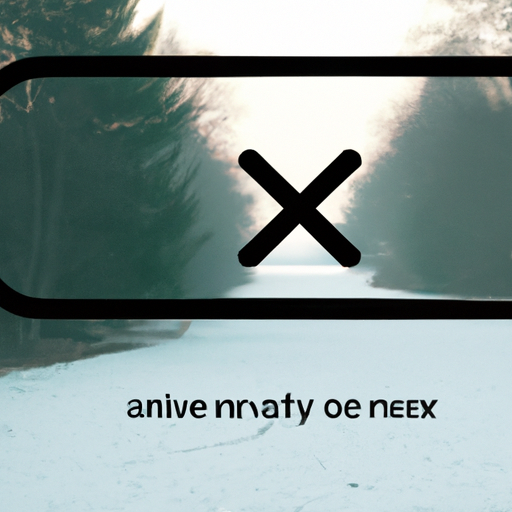Exploring the Possibilities of AI-Assisted Navigation for Blind Individuals
Navigating the world can be a daunting task for anyone, but for individuals who are blind or visually impaired, it can be especially challenging. Fortunately, advances in artificial intelligence (AI) are making it possible for blind individuals to explore the world with greater independence and confidence.
AI-assisted navigation systems use a combination of sensors, cameras, and algorithms to help blind individuals safely and accurately navigate their environment. These systems can detect obstacles, recognize landmarks, and provide audio cues to help guide the user. They can also be used to identify objects, such as street signs, and provide information about the user’s location.
One of the most promising AI-assisted navigation systems is the Aira Access system. This system uses a combination of cameras, sensors, and algorithms to provide real-time audio cues to help guide the user. It can detect obstacles, recognize landmarks, and provide information about the user’s location. The system also has the ability to recognize objects, such as street signs, and provide additional information about the user’s surroundings.
Another AI-assisted navigation system is the Wayband system. This system uses a combination of sensors, cameras, and algorithms to provide audio cues to help guide the user. It can detect obstacles, recognize landmarks, and provide information about the user’s location. The system also has the ability to recognize objects, such as street signs, and provide additional information about the user’s surroundings.
AI-assisted navigation systems are making it possible for blind individuals to explore the world with greater independence and confidence. These systems can help blind individuals navigate their environment safely and accurately, and provide them with the information they need to make informed decisions. With the help of AI-assisted navigation systems, blind individuals can explore the world with greater freedom and confidence.
How AI Can Help Blind Individuals Experience Visual Art
Art is a powerful form of expression that can be enjoyed by people of all abilities. For individuals who are blind or visually impaired, however, experiencing visual art can be a challenge. Fortunately, advances in artificial intelligence (AI) are making it possible for blind individuals to experience visual art in new and exciting ways.
AI-powered technologies are helping to bridge the gap between the visually impaired and visual art. For example, AI-powered audio description systems can provide detailed descriptions of artwork, allowing blind individuals to gain a better understanding of the artwork’s composition and meaning. AI-powered tactile systems can also be used to create 3D models of artwork that can be felt and explored. These models can provide a tactile experience of the artwork, allowing blind individuals to gain a better understanding of the artwork’s shape, texture, and other features.
In addition to providing a better understanding of artwork, AI-powered technologies can also be used to create new forms of art that are accessible to the visually impaired. For example, AI-powered systems can be used to create audio-based artworks that can be experienced through sound. These audio-based artworks can provide a unique and engaging experience for blind individuals.
AI-powered technologies are also being used to create virtual reality (VR) experiences that are accessible to the visually impaired. VR experiences can provide a fully immersive experience of artwork, allowing blind individuals to explore artwork in a way that is not possible with traditional methods.
AI-powered technologies are making it possible for blind individuals to experience visual art in new and exciting ways. By providing detailed descriptions, tactile models, audio-based artworks, and virtual reality experiences, AI-powered technologies are helping to bridge the gap between the visually impaired and visual art.
Examining the Potential of AI-Assisted Image Recognition for Blind Individuals

As technology continues to advance, so too does the potential for artificial intelligence (AI) to help improve the lives of people with disabilities. One area where AI can be particularly beneficial is in the field of image recognition for blind individuals. With the help of AI-assisted image recognition, blind individuals can gain access to a world of visual information that was previously inaccessible to them.
Image recognition technology works by using algorithms to identify objects in an image. AI-assisted image recognition takes this technology a step further by using AI to interpret the image and provide additional information about the object. For example, an AI-assisted image recognition system could be used to identify a tree in an image and provide information about its type, size, and location.
The potential applications of AI-assisted image recognition for blind individuals are vast. For example, it could be used to help blind individuals navigate their environment by providing audio descriptions of objects in their vicinity. It could also be used to help blind individuals identify objects in their home, such as a specific type of furniture or a particular item of clothing.
AI-assisted image recognition could also be used to help blind individuals access visual information from the internet. For example, it could be used to provide audio descriptions of images in online articles or to provide audio descriptions of images in social media posts. This would enable blind individuals to access visual information that was previously inaccessible to them.
AI-assisted image recognition has the potential to revolutionize the lives of blind individuals by providing them with access to a world of visual information. While there are still some challenges to be overcome, such as ensuring accuracy and reliability, the potential of this technology is undeniable. With the help of AI-assisted image recognition, blind individuals can gain access to a world of visual information that was previously inaccessible to them.
Exploring the Benefits of AI-Assisted Audio Descriptions for Blind Individuals
As technology continues to advance, so too do the opportunities for blind individuals to access the world around them. One such opportunity is the use of AI-assisted audio descriptions, which can provide blind individuals with a more comprehensive understanding of their environment.
Audio descriptions are a form of narration that provide additional information about what is happening onscreen. This can include descriptions of characters, settings, and other visual elements that are not otherwise conveyed through dialogue. AI-assisted audio descriptions take this a step further by using artificial intelligence to generate more detailed and accurate descriptions.
The benefits of AI-assisted audio descriptions for blind individuals are numerous. For starters, they can provide a more comprehensive understanding of what is happening onscreen. This can be especially helpful for those who are watching movies or television shows, as it can help them to better follow the plot and understand the characters. Additionally, AI-assisted audio descriptions can help to make the viewing experience more enjoyable, as they can provide more detailed descriptions of the visuals.
Furthermore, AI-assisted audio descriptions can help to make the viewing experience more accessible. By providing more detailed descriptions, blind individuals can better understand what is happening onscreen and can more easily follow along. This can help to make the viewing experience more enjoyable and can help to reduce the feeling of exclusion that can sometimes come with watching movies or television shows.
Finally, AI-assisted audio descriptions can help to make the viewing experience more efficient. By providing more detailed descriptions, blind individuals can more quickly understand what is happening onscreen and can more easily follow along. This can help to reduce the amount of time it takes to watch a movie or television show, as well as reduce the amount of time it takes to understand what is happening.
In conclusion, AI-assisted audio descriptions can provide numerous benefits for blind individuals. By providing more detailed and accurate descriptions, they can help to make the viewing experience more enjoyable, accessible, and efficient. As technology continues to advance, it is likely that AI-assisted audio descriptions will become even more commonplace, providing even more opportunities for blind individuals to access the world around them.
Investigating the Potential of AI-Assisted Text-to-Speech for Blind Individuals
As technology continues to advance, so too does the potential for artificial intelligence (AI) to assist blind individuals in their daily lives. AI-assisted text-to-speech (TTS) is one such technology that has the potential to revolutionize the way blind individuals interact with the world around them.
Text-to-speech technology has been around for some time, but AI-assisted TTS is a relatively new development. AI-assisted TTS uses natural language processing (NLP) to interpret text and convert it into speech. This technology can be used to read aloud text from websites, documents, and other sources, allowing blind individuals to access information that would otherwise be inaccessible to them.
AI-assisted TTS can also be used to help blind individuals navigate their environment. For example, AI-assisted TTS can be used to provide audio cues when crossing streets, entering buildings, or navigating public transportation. This technology can also be used to provide audio descriptions of images, allowing blind individuals to gain a better understanding of their surroundings.
The potential of AI-assisted TTS for blind individuals is immense. This technology can help blind individuals access information, navigate their environment, and interact with the world around them in ways that were previously impossible. With the continued development of AI-assisted TTS, blind individuals can look forward to a future of greater independence and access to information.
